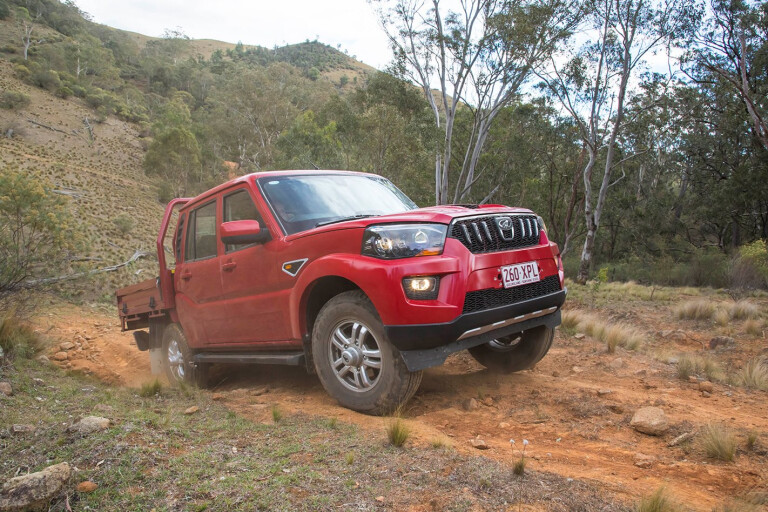
MAHINDRA’S new Pik-Up 4x4 has arrived in Australia and brings significant changes, headlined by a more powerful engine, a six-speed manual gearbox, fresh styling, a new interior, more equipment, and, for the first time, electronic chassis control systems (as its fitment on all-new light commercial vehicles became mandatory at the end of 2017).
This top-to-bottom rebirth comes some 10 years after the Pik-Up first arrived in Australia, and it follows the 2011 update that saw a new, more-powerful Euro-5 compliant 2.2-litre diesel replace the original 2.5-litre diesel.
What we are driving here is the top-spec (S10) dual-cab 4x4 and, as you can tell from its looks, the Pik-Up is more in the style of a Land Cruiser 79 than something like a Hilux or Ranger, given it is more ‘light-truck’ than ‘passenger ute’ in its general body style and design intent.
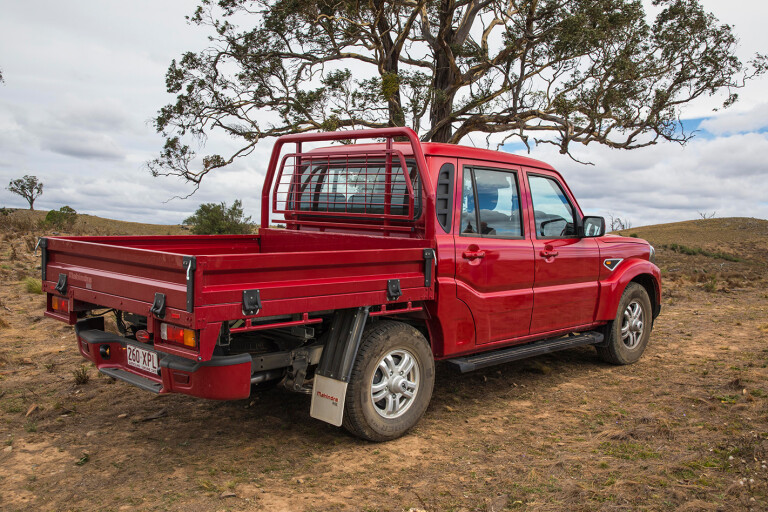
The Pik-Up’s trump card is pricing, with the S6 dual-cab (with factory tub) less than $29,990 drive-away and the up-spec S10, also with a factory tub, just $2K more. Our test vehicle is an S10 but with the tub replaced with a deluxe heavy-duty colour-coded steel tray, making it a $34,990 drive-away proposition. Compare that to the $80K+ you pay to get an LC79 double-cab (with a tray and air-con).
In the April 2018 issue of 4X4 Australia we tested the new Pik-Up 4x4 single-cab and came away very impressed, so we were keen to see how the more versatile dual-cab shapes up, especially as a recreational 4x4.
POWERTRAIN AND PERFORMANCE
DESPITE its upgraded 2.2-litre four-cylinder diesel, the Pik-Up is still no powerhouse on paper and claims a modest 103kW (up from 90kW) and 330Nm (up from 290Nm). But these numbers don’t really reflect what is a willing and energetic engine that gets on with the job with little fuss. Perhaps the secret is that the 330Nm is available from just 1600rpm and doesn’t diminish until 2800rpm, which provides a nicely linear power delivery over a wide rpm band. That said, the Pik-Up doesn’t have much left in reserve for overtaking at highway speeds, and this is one of the few situations where more power would be welcome.
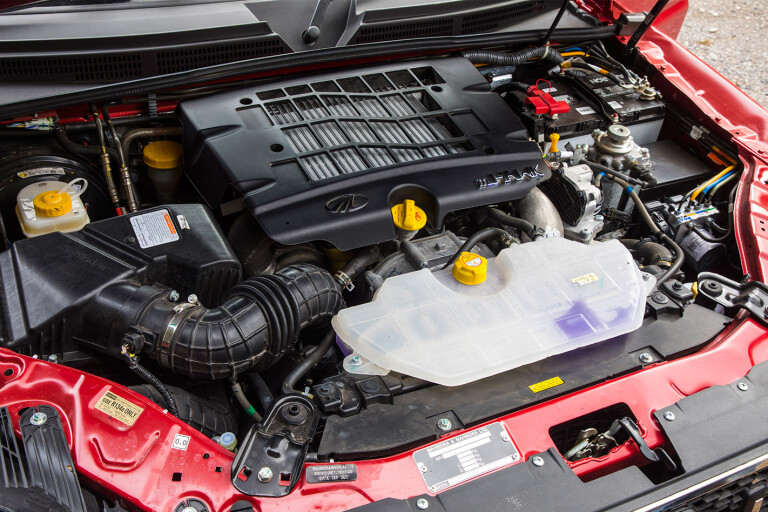
The new engine also impresses with its refinement and noise control, and certainly sounds and feels more like a quality passenger-car diesel than something you would find in a commercial work and farm vehicle.
For its part, the six-speed manual offers short and crisp shifts, with overall gearing short enough so that open road and expressway hills can be conquered in top, yet tall enough to not feel busy at highway speeds. At 100km/h in sixth, the engine spins at a relatively modest 2000rpm and feels very relaxed and happy.
ON-ROAD
THE Pik-Up is a relatively high-riding work and farm ute, so don’t expect it to handle like a go-kart on-road. That said, the Pik-Up offers decent steering feel and feedback and doesn’t do anything particularly untoward on bumpy country roads. However, unladen ride quality is on the firm side and you can be bounced around a bit, but this is the downside of its ability to carry its maximum payload (1000kg+) without becoming too soft or soggy (see Payload Test breakout on page 72).
OFF-ROAD
THERE’S nothing too shabby about the Pik-Up when off-road, with excellent visibility from the upright driving position, more ground clearance than the factory claim of 210mm suggests, and off-road friendly 16-inch wheel and tyre specification. The Pik-Up also comes standard with an Eaton (mechanical) self-locker at the rear, which works even in two-wheel drive. In addition, the Pik-Up has electronic traction control that stays active on the front axle in four-wheel drive even when the Eaton locker engages, all of which makes the Pik-Up more sophisticated in this regard than the majority of the popular mainstream utes.

More wheel travel from the independent torsion-bar front-end would be welcome. The rear leaf-sprung live axle does better for travel, and what trouble you may have when the Pik-Up starts to lift wheels is countered by the locker and the traction control. It’s still no LC79 in gnarly off-road conditions, but it’s still more than handy. Part-time 4x4, operated via a rotary dial, comes courtesy of a BorgWarner transfer case, and the engagement and disengagement of both High4 and Low4 proved seamless and relatively quick, which is not always the case with electro-magnetic transfer boxes. Plenty of reduction in low range, too, for steep country.
CABIN AND SAFETY
THE Pik-Up’s upright cabin is spacious both back and front. There’s no steering-wheel reach adjustment (only tilt adjustment), but the driver’s seat has height adjustment, and both driver and front passenger get fold-down armrests, both part of the S10’s extra kit (see Equipment breakout). There’s heaps of headroom, decent legroom and sufficient width for three adults in the back seat, too, even if the seat is relatively upright and somewhat hard.
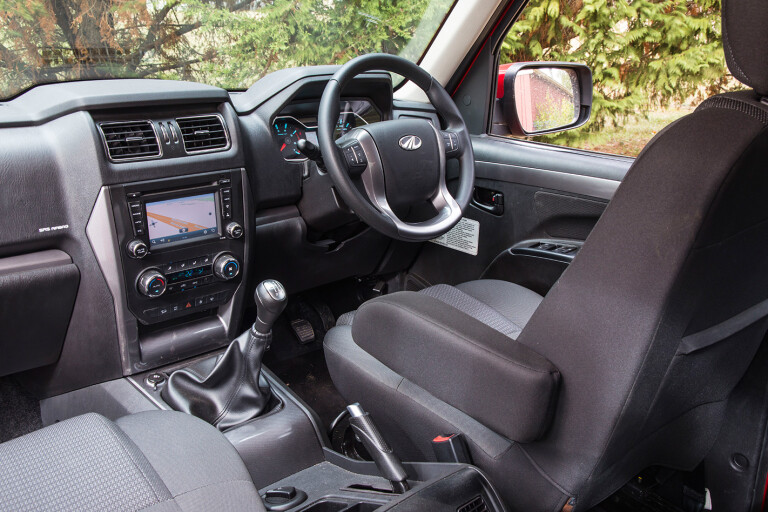
The cabin is much better finished than before and generally feels more modern, but could be better in detail. It needs more centre-console storage, bottle holders in the front doors, and more secure stowage for the jack handle and wheel brace, which are both ‘Velcro-ed’ under the rear seat and soon ‘float’ around.
This new Pik-Up hasn’t been ANCAP safety tested; although, the previous model achieved a three-star rating without electronic stability, traction control and rollover mitigation, now fitted.
PRACTICALITIES
AT A TIME when most utes boast 3500kg tow ratings the Pik-Up offers 2500kg, which is still handy enough depending on what you wish to tow. The Pik-Up is more than competitive with its 1000kg+ payload claim, though.
The standard 80-litre fuel tank provides a reasonable fuel range given the engine is relatively thrifty, and there’s room underneath to fit a long-range tank if needs be. Lots of options, too, in terms of all-terrain and mud-terrain tyres (some in Light Truck construction) to replace the standard 245/75R16 (111 S) General Grabber HTs (made in the USA, no less), which are still more than handy off-road away from deep mud.
Factory accessories include a winch-compatible steel bullbar, a snorkel, various trays and a towbar. A suspension upgrade and lift kit, a stainless-steel nudgebar and a bashplate are all in Mahindra’s accessory pipeline.
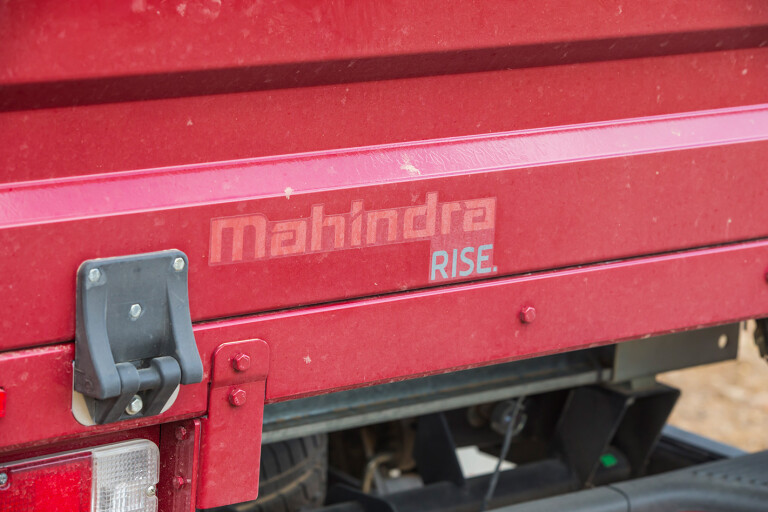
Nice detail touches around the Pik-Up include gas bonnet-struts and a manual fuel-pump prime; although, the lack of a lock for the fuel cap isn’t ideal.
The Pik-Up has 15,000km or 12-month service intervals with service provided by 40 dealers nationally, while the warranty is the industry standard three years/100,000km.
EQUIPMENT
PIK-UP dual-cab 4x4s are offered in base S6 spec or top S10 spec. Equipment on the S6 runs to electronic traction and stability control, an Eaton self-engaging rear locker, 16-inch steel wheels, air-con, driver and passenger airbags, three-point seatbelts and headrests for all passengers, and ISOFIX child-seat anchor points.
The S10 adds 16-inch alloys, a six-inch touchscreen, sat-nav, a reversing camera, Bluetooth, driver’s seat height adjustment, automatic headlights and windscreen wipers, day-time running lights, and climate and cruise control.
MAX PAYLOAD TEST
LIKE all utes we test, we loaded the Pik-Up with what is effectively a maximum payload. With a GVM of 3150kg – 50kg less than the heavier LC79 but 100kg more than the similar-weight Hilux – the Pik-Up has a very competitive payload, around 1050kg with this steel tray and 1070kg with the factory tub.
Our test involved 800kg on a full-sized pallet. With the longer cabin of the dual-cab, this weight is all behind the rear axle rather than over it as it is with a single-cab. Add in driver and passenger (another 150kg) and 50kg of miscellaneous gear and you’re right on the 1050kg maximum payload. How did it handle it? Well, very nicely indeed.
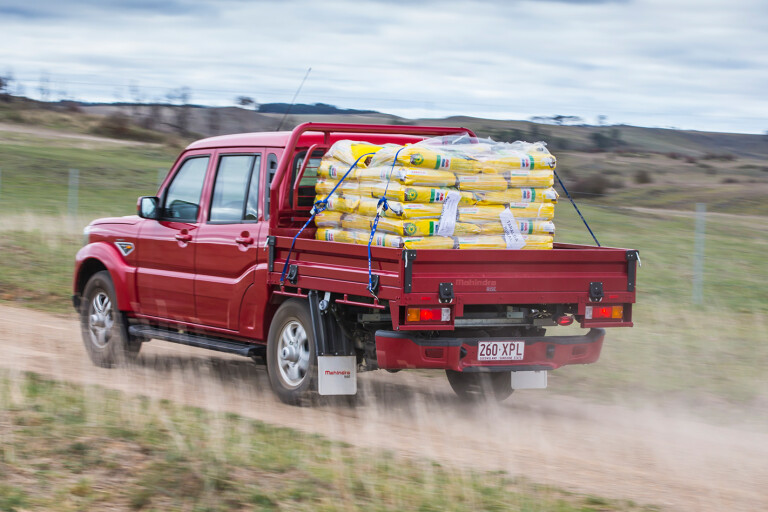
The back of the Pik-Up dropped just 60mm at the axle line, which levelled the vehicle rather than lifted the nose. On the road you could feel the weight on the back, but the Pik-Up remained stable and secure and rode a lot more smoothly. The engine felt the weight in general acceleration and hill-climbing, but it didn’t need to work excessively hard to maintain highway speeds. Top job all ’round.
SUM UP
GIVEN its price point, the Pik-Up is better to drive than it should be. It’s surprisingly pleasant on-road (better than an LC79 in many ways), can carry a decent load and is more than useful off-road. It also looks to be solidly built and, in the 10 years the Pik-Up has been in Australia, it has earned a reputation for decent reliability. As a farm and work vehicle it deserves to sell much better than it does … every farm should have one, in fact.
Is it a good proposition as a recreational family 4x4? Well, it certainly offers a lot of functionality for the money, and if you don’t need the power and performance of other mainstream utes – or more than a 2500kg tow rating – it’s well worth a look.
MAHINDRA PIK-UP 4X4 DUAL-CAB/CHASSIS SPECS
Engine 2.2-litre 4cyl turbo-diesel
Max power 103kW at 4000rpm
Max torque 330Nm at 1600-2800rpm
Gearbox Six-speed manual
4x4 system Dual-range part-time
Front suspension Independent/torsion bars
Rear suspension Live axle/leaf springs
Tyre/wheel spec 245/75R16 111S
Unladen weight 1940kg (no tray)
GVM 3150kg
Payload 1210kg (minus tray)
Towing capacity 2500kg
GCM 5150kg
Ground clearance 210mm (see text)
Fuel tank capacity 80 litres
ADR fuel claim 8.8 litres/100km
Test fuel use 10.5 litres/100km
Touring range 712km*
*Based on test fuel use, claimed fuel capacity and a 50km ‘safety’ margin.
MAHINDRA PIK-UP 4X4 PRICING*
S6 Single-cab/chassis: $26,990
S6 Dual-cab/chassis: $29,490
S6 Dual-cab ute: $29,990
S10 Dual-cab ute: $31,990
*Prices are driveaway.

COMMENTS